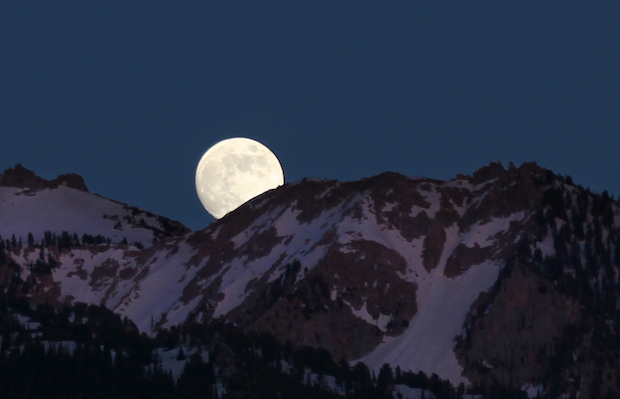
The pink supermoon (Photo by BILL DUNFORD / NASA)
MANILA, Philippines – Apart from posts on the Duterte administration’s response to the COVID-19 pandemic, social media swelled with photos of the pink supermoon taken by amateur and professional photographers on Tuesday night.
But does the moon really turn pink on this day?
According to the Philippine Atmospheric, Geophysical and Astronomical Services Administration (PAGASA), the term pink supermoon is a foreign concoction.
In its official Twitter page, Pagasa answered queries from curious netizens on why the moon is described as pink and why it appears bigger today compared to ordinary days.
PAGASA noted that the pink refers to the color of flowers in North America that usually bloom when a supermoon arrives.
“Muli po: hindi magiging pink ang buwan. Tinawag itong Pink Supermoon dahil sumasabay ito sa pamumukadkad ng mga pink na bulaklak sa North America sa unang bahagi ng spring o tagsibol. Banyagang konsepto ang pagpapangalan sa supermoon,” PAGASA said in a tweet.
Muli po: hindi magiging pink ang buwan.
Tinawag itong Pink Supermoon dahil sumasabay ito sa pamumukadkad ng mga pink na bulaklak sa North America sa unang bahagi ng spring o tagsibol. Banyagang konsepto ang pagpapangalan sa supermoon.
Salamat sa magandang kuha, @merxceline! https://t.co/Dz8bRjN9mW
— PAGASA-DOST (@dost_pagasa) April 7, 2020
[Again, the moon does not turn pink. It was called Pink supermoon because it coincideD with the blossoming of pink flowers in North America, in the first part of their spring weather. Naming supermoons are a foreign concept.]
Pagasa also clarified that the moon would not get larger at this time of the year. It would only appear larger than on other days.
“Dahil sa tinatawag na moon illusion, mas nagmumukhang malaki ang buwan kapag ito ay nasa may horizon tuwing moonrise at moonset. May ilang teorya na nagpapaliwanag sa phenomenon na ito pero wala pang consensus ang mga astronomers,” they added.
[Because of what’s called the moon illusion, the moon appears to be larger when it is on the horizon every moonrise and moonset. There are several theories aiming to explain this phenomenon although there is no consensus among astronomers.]
However, Pagasa also told photo hobbyists that the moon would be closest to the Earth by 2:09 a.m. of early Wednesday morning.
/atm